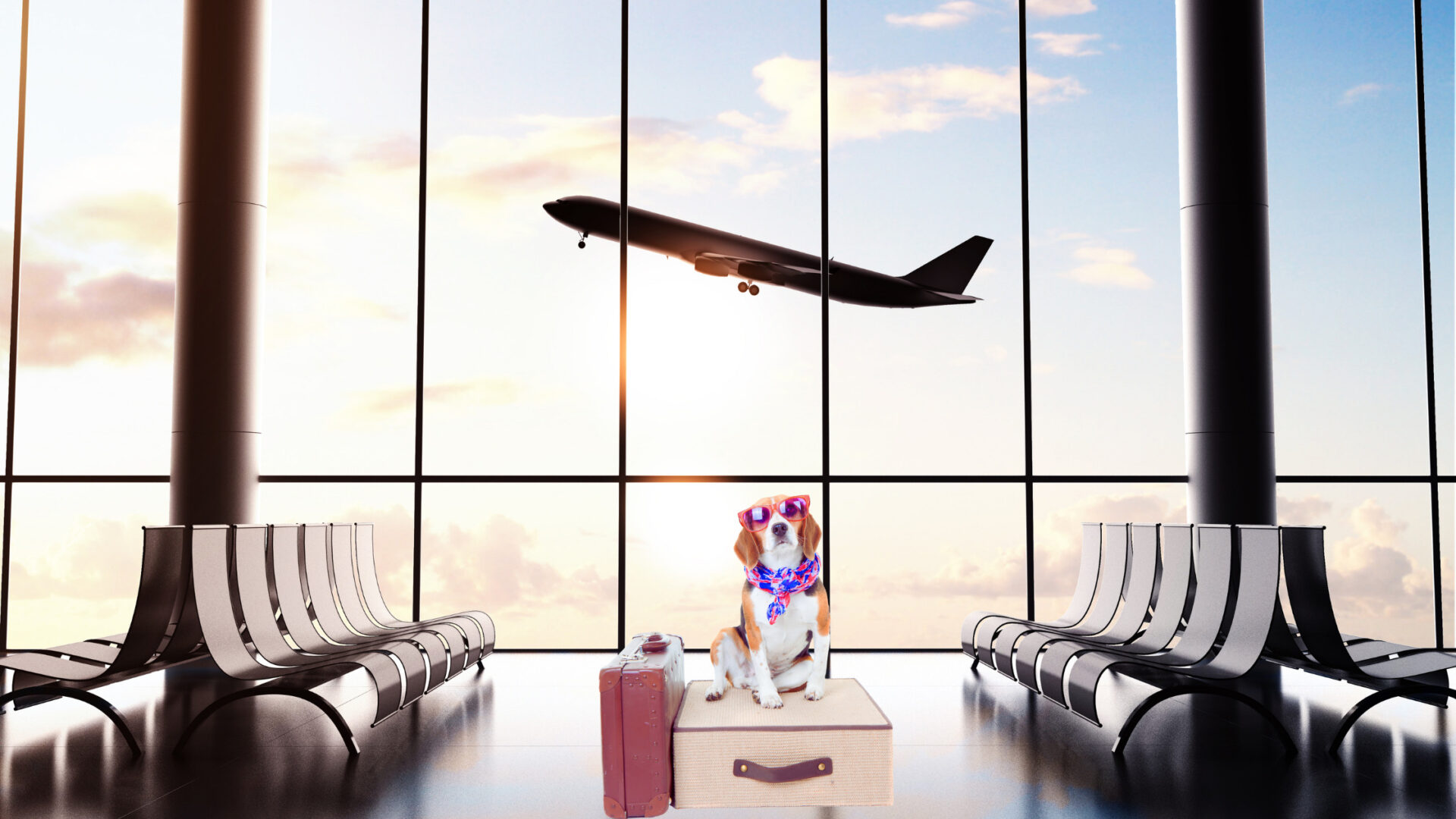Understanding Pet Anxiety during Air Travel
Pets can experience anxiety and stress during international air travel, which can cause physical and emotional discomfort. Understanding the symptoms of pet anxiety and how to reduce it can help pet owners ensure their furry friends have a comfortable and safe flight. Here are some pre-flight, during flight, and post-flight tips to help reducing pet anxiety during air travel.

Pre-Flight Preparation
Visit the Vet
Before traveling, it is essential to visit the vet to ensure that your pet is healthy enough & up to date with their vaccination prior air travel. The vet can also provide advice on how to reduce anxiety during the journey, such as prescribing calming medications.
Get the Right Carrier
Choosing the right carrier is essential for pet travel. The carrier should be comfortable, safe, and the right size for your pet. Make sure to measure your pet and check the airline guidelines for pet carriers.
Practice with Carrier
Familiarize your pet with the carrier by allowing them to explore it and get used to it. This can help reduce anxiety during the flight.
Familiarize with the Airline Guidelines
Airline guidelines for pet travel can vary, so it is important to read and understand them before the flight. This can help avoid issues during check-in and boarding.
During the Flight
Calming Treats and Medications
If your pet experiences severe anxiety, calming treats or medications prescribed by a vet can help them relax during the flight. Be sure to follow the dosage and administration instructions.
Familiar Items from Home
Bring familiar items from home, such as their favorite toy or blanket, to help comfort them during the flight.
Comfortable and Safe Environment
Create a comfortable and safe environment for your pet by making sure they have enough water and food, and are not too hot or cold.
Post-Flight:
Be Prepared for Jet Lag
Your pet may experience jet lag after the flight, so be prepared for them to be a little disoriented or lethargic.
Give Your Pet Time to Adjust
Give your pet some time to adjust to their new surroundings before resuming their regular routine.
Conclusion: Happy and Healthy Pet Travel
Reducing pet anxiety during international air travel is essential to ensure that your pet has a comfortable and safe journey. By following these pre-flight, during flight, and post-flight tips, pet owners can help reduce their pet’s anxiety and ensure happy and healthy pet travel.
We hope that this blog post has been helpful in guiding you through the process of relocating your pet to the UAE. At Chauf-fur, we understand how important your pet is to you and how stressful the relocation process can be. If you have any more questions or concerns about relocating your pet to the UAE, please don’t hesitate to get in touch with us. Our team of experts is here to assist you in any way we can to ensure that your furry friend has a smooth and stress-free transition to their new home.

 Call +971559927669
Call +971559927669 


[…] To make your pet’s travel experience as comfortable as possible, make sure to measure them for the perfect crate and follow tips for reducing pet anxiety during air travel. […]
[…] well-being is as important as taking care of their physical needs. You can find effective tips for reducing pet anxiety during air travel on our […]
[…] Pro Tip: Make your pet’s travel experience less stressful with Chauf-fur’s tips for reducing pet anxiety during air travel. […]
[…] anxiety during air travel is a significant concern. Professional pet relocators not only provide tips for reducing pet anxiety during air travel, but they also understand how to create a calm environment that keeps your pet relaxed during […]
[…] counterparts. They’re prone to anxiety, especially during air travel. And while we have tips for reducing pet anxiety during flights, it’s crucial to ensure you meet the airline’s cargo crate […]
[…] Whether you’re traveling by car or plane, ensure they have the chance to move periodically. Tips for reducing pet anxiety during air travel can also benefit pets with arthritis, as stress can exacerbate […]
[…] can cause anxiety in pets. To manage this, […]